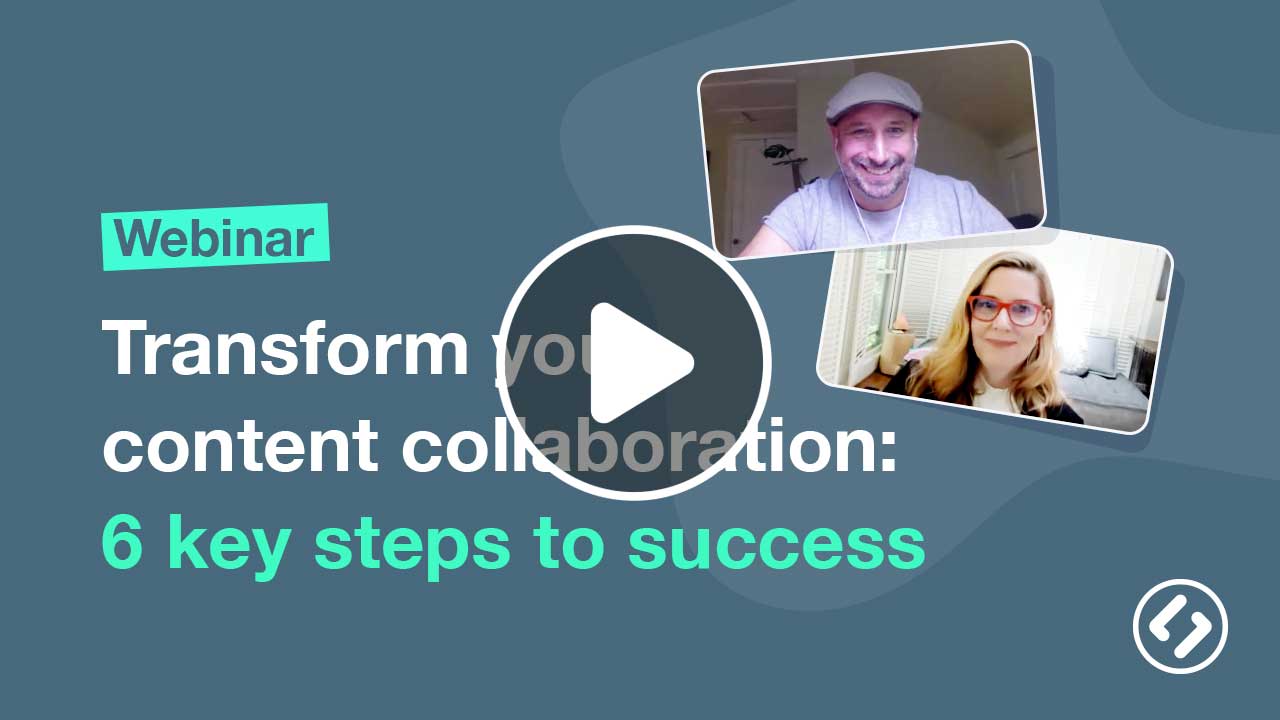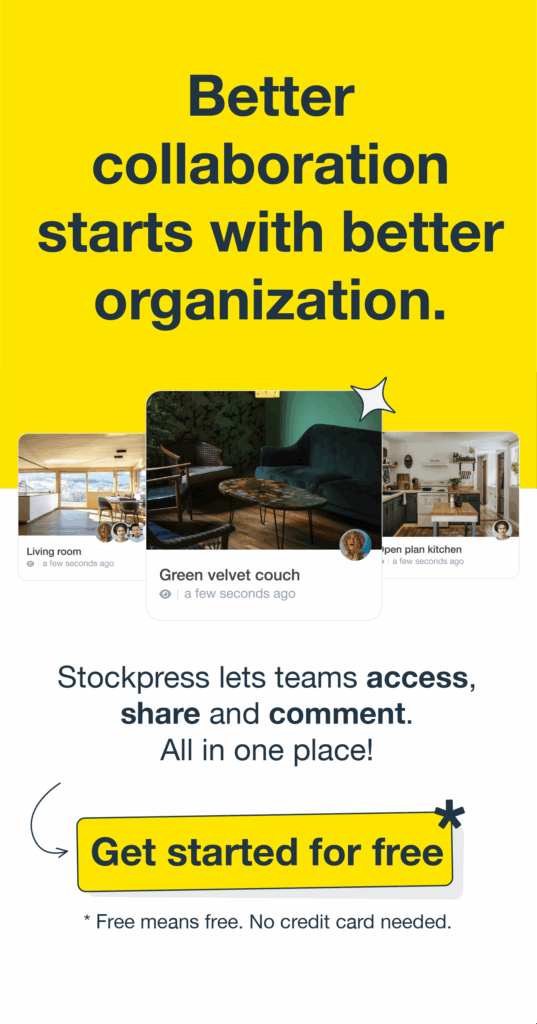Long before the pandemic came along, the team here at Stockpress placed high value on collaboration. As the world continues to change—and a greater number of teams adopt a remote-friendly approach and embraced more agile ways of working—collaboration has only become more important!
In our latest webinar, Stockpress co-founder Ian Parkes talked to Lindsey Hawkins, President of Be More Nimble, about how companies can transform content collaboration. Lindsey broke her model down into six key steps that you can use to revolutionize the way you ideate, create, and distribute content.
Catch up on the full recording below, and read on for our key takeaways!
1. Business gap analysis: Where are we at, overall?
First, let’s get this out of the way: Content doesn’t exist in a vacuum! You’ll need to align your content strategy to your overarching business needs, which is why we’re starting with a gap analysis.
“It’s not your content gap. It’s your business gap.”
– Lindsey Hawkins
Start by asking questions like:
- What’s missing from my day-to-day business needs?
- What areas need improvement?
- What gaps have I noticed within content collaboration?
- What are my key areas of consideration?
Next, it’s time to iron out your vision statement. When you’re dreaming up your vision for the company, be sure to think about future goals, success metrics, the people that will be impacted, and the benefits and risks of different decisions.
Exploring these ideas in an honest way can help you see what’s missing from the big picture. You might even come to an understanding of exactly where you want to be 5-10 years down the road! Then, you can use that knowledge to identify how content can best be used to get you there.
Psst: What does your team really need to be collaborative?
We surveyed 150+ industry professionals to find out.
Download the full 2023 State of Collaboration report below!
2. Resource audit: What do we already have?
During your resource audit, you’ll take a hard look at what you actually have right now. That includes people, the volume of processes, technology solutions, and budget.
- People available: Lindsey likes to use the RACI acronym, which stands for Responsible (which person gets the work done?); Accountable (who approves the work?); Consulted (who needs to be told before work begins?); and Informed (are there stakeholders who don’t have to be consulted, but should be kept in the loop?). You will probably find this number is higher than you expected; that’s totally normal!
- The volume of processes: What assets are coming in? How many channels are you managing? What people or departments are building content? Are you duplicating work in any areas? Again, you may be surprised by this number once you really start digging for information.
- Technology solutions: What are the ways you store and distribute content? What external tools do you rely on? This one tends to be more straightforward than the others because you probably know exactly what platforms you’re paying for!
- Budget: You’ll need to plan for how you’re going to operationalize and execute your content strategy in a tactical, ongoing way. How will you pay for the people who need to create, distribute, and manage the content you want? Are there integrations you could lean on to lighten the workload and reduce the necessary budget?
3. Requirements gathering: Who needs to know?
The time has come to get clear on your stakeholders. Sometimes, they aren’t who you think!
Make sure you know who the real stakeholders are, what their responsibilities are, and why content is important to them. These needs will probably dictate what type of content you end up creating.
For example, your VP of Marketing Ops is responsible for the overall operational functions and processes of the marketing department. That person might say to you, “I just want to be sure the marketing teams and agency partners have all the content they need to do their jobs.”
That’s a very different need than, say, a Digital Procurement Lead, who is more worried about providing the right content specs to retailers and remaining in compliance. Two different roles, two different types of content needs—but equally important in your quest for information!
4. Governance: How do we keep everything consistent?
Now you’ve done your overall gap analysis, audited your resources, and identified who the stakeholders are. Next up is content governance, which provides a framework to ensure that all your assets are consistent and on-brand across platforms.
You’ll need to involve at least four major roles:
- Leaders within the organization who will act as the “executive sponsor” of the initiative and understand the big picture.
- Operational managers who address business issues and act as escalation points when needed.
- Tactical staff who are in the weeds day-to-day, acting according to the plans set out by the governance council.
- Content influencers that shape the direction of your content.
Content influencers include your sales team, agency partners, internal content folks, legal team, IT operations, and more. This group is super important to be mindful of, as they can help clue you into challenges or problems you weren’t aware of—and they can help with necessary buy-in if they feel looped in and included!
Make sure you spend time thinking about the future. The hard work doesn’t end after adoption! How will you educate new employees on your processes? How will you ensure that people stay up to date on where to access information?
5. Identifying use cases: What needs are we missing?
Remember when we talked about requirements gathering and content needs during Step #3? That will come in handy here, as you start to go deeper and outline your use cases.
You want to investigate what people told you they needed. Be inclusive throughout this process, and don’t leave anyone out. Find out what teams these people manage, who rolls up to them in the org chart, and think about all of their possible use cases.
For example, take your marketing leaders. We already discussed that they’re responsible for overall department function, processes, tools, and related things. But, when you really start to drill down into learning more about them, you’ll probably discover that they also manage agency relationships, brand marketing teams, and campaign teams.
That’s important to know! It gives you a fuller idea of their content needs beyond what they’ve expressed.
“Use cases move and change because the business will grow and change.”
– Lindsey Hawkins
Always remember that use cases can grow and change. No organization is static, so content won’t be, either.
6. Vendor selection: What file management platform or DAM should we buy?
Finally, you’re ready to select your digital asset management (DAM) platform! The important thing is not to pick the most popular or expensive option, but to find the one that makes the most sense for you.
A few key considerations here:
- Right fit: Does the vendor have an out-of-the-box solution that works for you? If not, how much work will it be to get things customized to where you want them?
- Budget: Is the product within your budget?
- Volume: Can the solution handle your business’s volume of content?
- Referral: Always ask to speak to other clients the vendor has worked with. If they won’t give you access to that info, that’s a red flag!
- Partner: Lastly, listen to your gut. Do you feel like this would be a good working relationship? Do you feel comfortable with the vendor? Is this someone you wouldn’t mind calling up whenever you have a question?
Note: If you’ve already picked your DAM, no worries! Working through the steps above will still help you get clear on how to streamline content collaboration within your company.
Stockpress offers full DAM functionality and an intuitive approach
Now you know how to transform content collaboration for your organization. It starts with a business gap analysis, leads to a resource audit, and sends you into requirements-gathering mode. Then, you’ll think about governance, identify use cases, and pick a vendor (the really fun part, in our opinion!).
If you’re looking for a cost-effective file-sharing solution for your entire team—including contractors, freelancers, and the like—check out Stockpress! Our platform is easy to use, quick to implement, and helps you improve file accessibility and security, all while bolstering team collaboration and making it easy to grow your business.


